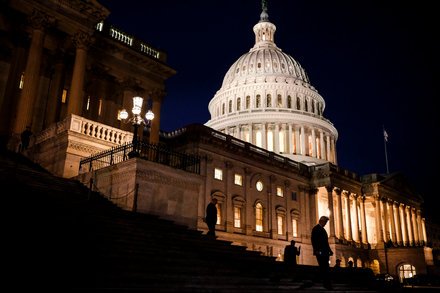Government Shutdown

February 13, 2018
Just last week, the United States received its first government shutdown in more than four years. The shutdown happened after a funding plan was passed by the House, but failed to pass Senate.
Democrats won’t be voting on the spending bill until DACA is fixed to their liking, while Republicans won’t agree until more money is given towards border security enhancements including Trump’s border wall. Democratic Senator Kamala Harris of California said, “This shutdown was avoidable.” While Republican Sen. Susan Collins of Maine said, “A government shutdown represents the ultimate failure to govern.”
During the shutdown in 2013, Republicans refused to vote for the increase of the state debt ceiling for the next fiscal year. Around 800,000 were furloughed and 1 million individuals worked without pay.
Since 1976, 18 government shutdowns have happened. The last one took place in 2013, and lasted for 16 days. The record for the most government shutdowns was a total of eight during President Ronald Reagan’s term.
A government shutdown doesn’t come free. In 2013, because of the shutdown’s loss in productivity, $2 billion was lost. $24 billion in economic activity was wasted, says the ratings from Standard & Poor’s.
During this time, people still receive their mail and social security checks. It will be harder to get a gun permit because of the many employees at the Bureau of Alcohol, Tobacco, Firearms and Explosives won’t be working. National parks and monuments will be closed to the public. Our military will continue their duties but will go unpaid during this event as well.
President Trump had to sign a bill that stopped the shutdown for now, but February both parties will be voting again.





